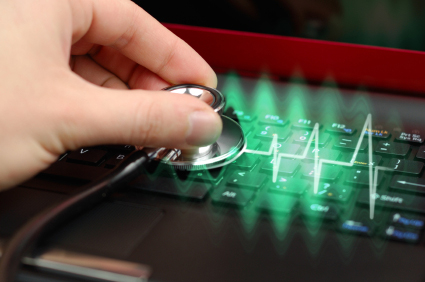Published on the 30/04/2013 | Written by Newsdesk

The introduction of electronic patient records and myriad devices that monitor patients and upload information is set to transform the healthcare industry…
Market research firm Frost & Sullivan has named these as among five top technologies that, it says, will revolutionise healthcare delivery over the next decade. The others are: cloud computing, visualisation tools, and social media.
According to Mark Dougan, managing director of Frost & Sullivan Australia, much greater use of IT in the healthcare industry will be essential to help prevent a projected blow out of healthcare costs. “Healthcare expenditure in Australia reached $134 billion in 2012 and is increasing at six percent, or twice the growth rate of GDP, annually. At this rate it will reach 15 percent of GDP in ten years time. That rate of growth is unsustainable.”
Machine-to-machine (M2M) communication, already well established in many industries, will be applied to healthcare to “encapsulate the healthcare consumer in a web of devices that constantly monitor physiological parameters, analyse the information and communicate it to the right people and devices in almost real-time,” Frost & Sullivan says.
According to Chris Stevens, CTO of Orion Health, a New Zealand software company focused on the healthcare industry, “With the consumerisation of IT through mobile devices and social media, patients are becoming more comfortable with technology [and there is a] trend for more proactive care based on the input of devices that people have in their home such as blood pressure monitors or blood glucose readers.
“I believe we are on the verge of seeing those devices becoming networked, so that when a patient takes their blood pressure, the results will be uploaded to a secure cloud where they can be shared with the healthcare provider. This allows the provider to adopt a more preventative role rather than having to wait for the patient’s next visit to the clinic.”
He added, “In the consumer space, people are buying connected devices such as scales that upload readings to the internet or smartphone apps that act as pedometers. The information from these devices can be useful in patient records, allowing the healthcare provider to have a more constructive discussion with the patient.”
Frost & Sullivan says that as the data flow from these and other sources increases, “the volume of medical and health data will expand to the tune of terabytes. These large, complex data sets will comprise healthcare big data and will act as a valuable resource for a number of stakeholders across the healthcare ecosystem.”



























